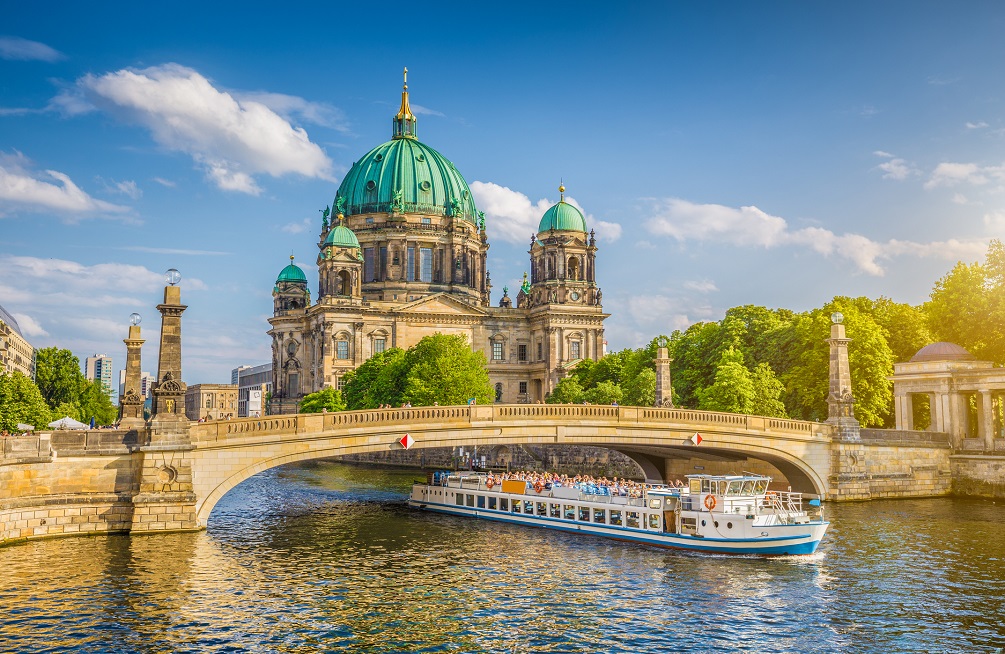Top Historical Sites to Visit in Germany
5th August 2021
5 min. read
1743

Centuries ago, Germany was the center of the Holy Roman Empire and through the ages, the country has been at the forefront of global development. The country is as rich in historic treasures as it is in natural beauty and through the length and breadth of Germany, you can explore pivotal moments in history that changed the world as we know it today. These are 10 unmissable historic sites in Germany.
Cologne and Berlin Cathedrals
Religion has played a large part in the development of Germany and the stunning cathedrals and churches across the country are a reminder of this. These buildings all feature something special but none more so than the spectacular Berlin and Cologne Cathedrals. In Cologne, you will find a mighty gothic cathedral that took a painstaking 600 years to complete. A trip to the cathedral is seen as a pilgrimage for many Christians but whether you are religious or not, the stately nature of the building is undeniable. The Berlin Cathedral is an iconic part of the capital’s skyline and its bluish copper domes and the elaborate baroque interior is a true feast for the eyes.

Brandenburg Gate
This is one of the most iconic attractions in Berlin and has been standing proud for more than 200 years. The gates became a symbol of unity for a country once divided and are an excellent example of neoclassical architecture. The gates were inspired by the acropolis and has a definitively Grecian feel, from the monumental pillars framing the gate to the triumphant quadriga towering at the top. The gate can be seen in the most iconic photographs and artworks of Germany through the ages and is an unmissable stop on your historic deep dive into the country.

Berlin Wall and Checkpoint Charlie
The cold war is in the not-so-distant past and many visitors to these sights were alive to experience the colossal divisions this war inflicted on the world. The wall ran through berlin and stood from 1961-1989, dividing East and West Germany (and essentially, Europe). Today sections of the wall still stand as a reminder of those times, the longest stretch being 1.3km long and is known as the East Side Gallery. Thanks to 118 artists, the wall has now been clad in thought-provoking artwork and has been transformed into the largest outdoor gallery in the world. Checkpoint Charlie is the infamous border crossing between the east and the west. Today you can visit a replica of the site and there is a museum retelling the history of the wall and the war.

Neuschwanstein
At the end of the 19th century, King Ludwig II of Bavaria built a castle that has unintentionally become the blueprint for fairytale castles the world over. The dreamy castle is perched on a hill not far from Füssen and overlooks the stunning mountains of Tyrol. The king was known for his eccentricities and the castle’s insides are decorated with a myriad of frescoes and feature a stunning thrown hall. Outside you will see towers and turrets that inspired the exterior of Disney’s Cinderella’s castle. With more than 1.5 million visitors annually, it is one of the most visited castles in the world.

Reichstag (German Parliament Building)
Germany has long been a central figure in world politics and the influence of the German political system on a global scale is undeniable. The Reichstag was built in the time of Emperor Wilhelm 1st at the end of the 1800s and housed the German Parliament. It was later ravaged by a fire and bombed in WW2 but has been restored to its former glory. Today it is home to the German Parliament once more but visitors can visit this impressive landmark by appointment. You can look forward to seeing some extraordinary eco-architecture, perfectly preserved war-era Cyrillic graffiti and other art installations, panoramic views from the roof, and a view of parliamentary proceedings. If you cannot secure a reservation, opt for a picnic on the lawns in front of the building from where you can admire its striking features.

Roman Ruins in Trier
One easily forgets that German history predates modern times and this area of Europe was once under Roman rule. Remarkable Roman ruins can be found all over the country but Trier, which was once known as the “second Rome”, truly has the most well-preserved sites. The Imperial Baths date back to 300AD and were part of the extensive development that Constantine brought to the city. Porta Nigra is another dramatic feature in the city and ancient Roman and medieval remints and artifacts can be seen here. The Basilica of Constantine is the largest of its kind in the world and is still a functioning church to this day. Another ancient feature that is still in use today is the Trier Roman Amphitheater. Although they don’t host gladiator battles here anymore, you can often enjoy open-air events at this magnificent location.


Charlotte Bendon
Charlotte Bendon
charlotte@bendon.com
Specialist Area:
All Inclusive, Beaches, City Breaks, Theme Parks, Weddings and Honeymoon, Spa & Wellness, Romantic
View ProfileRelated Articles
Related News
Related Offers
SIGN UP FOR OUR MAILING LIST
Enter your email address and receive daily or weekly updates with the latest articles, news and videos.Copyright © 2021 Experienced Travellers Ltd. Experienced Travellers Ltd is not responsible for the content of external sites. Read about our approach external linking.


















